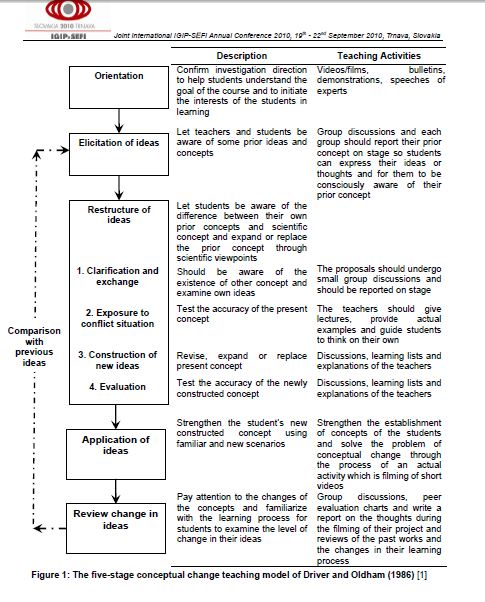What is Constructivism?
At its heart constructivism is a theory of knowledge. It examines how we learn and how we translate our learning into understanding.
Constructivist Instructional Model
The Constructivist Instructional Model incorporates a number of important concepts:
- Learners are not passive vessels in which to fill knowledge, but seen as active participants who want to be in charge of their own learning
- Learners have previous views and ideas. Prior knowledge is an imperative concept in achieving the construction of meaning
- Learners require opportunities to explore their ideas and to test their robustness in explaining phenomena, accounting for events and making predictions (So, 2002)
- Learners require stimuli to develop, modify and where necessary, change their ideas and views (So, 2002).
- Learners need support in their attempts to re-think and reconstruct their ideas and views (So, 2002)
- Learner’s experience and prior knowledge are inseparable as experience provides the basis for knowledge
- Learner’s social structure has a significant impact on their learning as it provides scaffolding and the mutual construction of knowledge (Jegede, nd)
The above concepts are incorporated in the Driver and Oldham teaching model which examines the 5 stages of conceptual change that assists in conceptual reconstruction:
Lin, C., Wu, P., Wu, W., & et al. (2010). Proceedings from the Joint International IGIP-SEFIAnnual Conference. Trnava, Slovakia.
The 5 Es Approach Teaching Strategy
Engage: Learners make connections between past and present learning experiences
Explore: Learners actively explore their environment or manipulate materials while using a common base of experiences
Explain: Learners have opportunities to verbalize their conceptual understanding or to demonstrate new skills or behaviors
Elaborate: Learners practice skills and behaviors through new experiences while developing a deeper and broader understanding of major concepts
Evaluate: Learners assess their understanding and abilities while teachers evaluate students’ understanding of key concepts and skill development
Enhancing Education. (2002). The 5 Es. Retrieved from here
POE – Predict-Observe-Explain
POE involves:
- Given a situation, learners are asked to predict and explain the next outcome
- Learners test their predictions and explanations by making accurate observations
- Check observations against their predictions and explanations
- If the observation is inconsistent with their predictions and explanations, then a search for appropriate explanation should be promoted
- New understanding should be reinforced through practice problems, questions and activities
UBC. (2012). POE – Predict-Observe-Explain. Constructivism strategies for e-learning. University of British Columbia.
Conceptual Change Model
The Conceptual Change Model aims at a learner’s present concept and seeks to add to or change this preconception. Posner (1982) identified conditions that must be present for learners to consider accommodating new learning into their schemata;
- There must be a dissatisfaction with existing conceptions
- The new conception must be intelligible
- The new conception must appear initially plausible
- The new concept should suggest the possibility of a fruitful outcome
Posner, G., Strike, K., Hewson, P. & Gertzog, W. (1982). Accommodation of a scientific conception: Toward a theory of conceptual change. Science Education, 66(2), 211-227.
Constructivist Elements that should be considered when developing educational content include:
- Construction of Knowledge
- Process, not Product
- Multiple Perspectives
- Situated Cognition
- Reflexive Cognition
- Cognitive Apprenticeship
- Process-Based Evaluation
The Educator Role in Constructivist Strategies:
- Facilitate and Guide learner
- Develop learning materials to foster structuring of knowledge and meaningful tasks, including situations that compel cognitive conflict
- Promote discovery and learning while being flexible
- Provide support and foster independence
The Learner Role in Constructivist Strategies:
- Responsible for their own learning
- Manage own time and efforts
- Participate and collaborate
For an excellent presentation on these concepts, please visit my MET colleague’s Constructivism site

